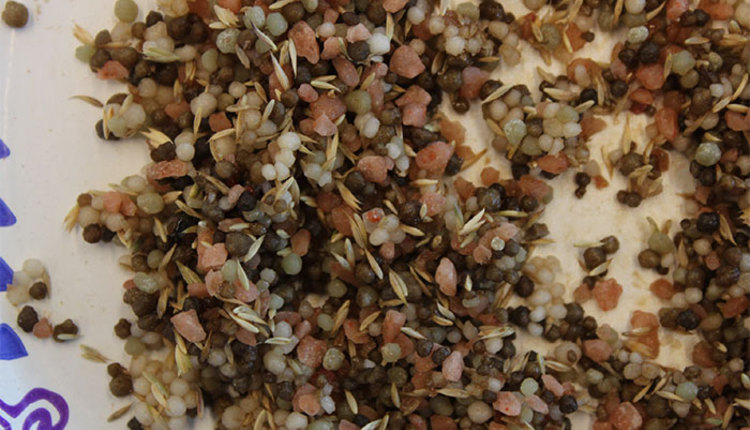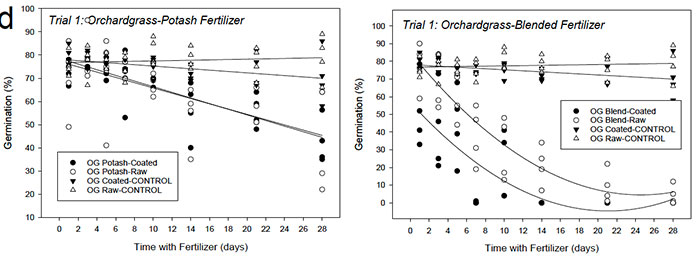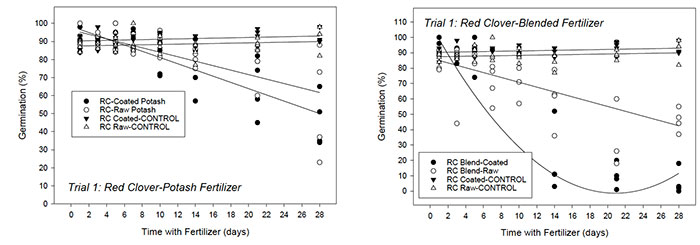
In an effort to beef up the productivity of existing pastures, one approach is to broadcast a mixture of fertilizer and seed in the same pass over the field.
At the American Forage and Grassland Council’s Annual Conference earlier this month, researchers at the University of Tennessee-Martin and the University of Kentucky evaluated the impact on germination when seeds are mixed with fertilizer. The treatments in the experiment included:
Fertilizer type: potash (0-0-60) or blend (19-19-19)
Seed type: orchardgrass or red clover
Seed coating: coated or noncoated
Seed was mixed with fertilizer and left from zero to 28 days. The seed was then transferred to petri dishes and kept at ambient temperature. Germination was checked at seven, 10, and 14 days.
Fertilizer lowered germination
For both orchardgrass and red clover, potash resulted in a linear decline in seed germination (Figures 1 and 2). The rate of germination decline was greater for coated seed in the case of red clover seed. Seed coating had no impact on the rate of germination decline for orchardgrass.
Figure 1. Impact of fertilizer type and duration of exposure on the germination of uncoated and coated orchardgrass seed. (Sparks et al., AFGC 2021)

Figure 2. Impact of fertilizer type and duration of exposure on the germination of uncoated and coated red clover seed. (Sparks et al., AFGC 2021)

The researchers noted that the blended fertilizer had a stronger affinity to attract and hold moisture, resulting in the formation of a fertilizer-seed slurry over time. For orchardgrass, the blended fertilizer resulted in a rapid quadratic decline in seed germination, and the rate of decline was greater for the coated seed (Figure 1).
In the case of red clover, the blended fertilizer-seed mix dropped seed germination linearly in the case of uncoated seed and quadratically for coated seed (Figure 2). The rate of germination decline was greater for coated seed. After 20 days of fertilizer exposure to the blended fertilizer, germination was 0% for the coated seed and 60% for the uncoated seed. The hygroscopic properties of both the blended fertilizer and seed coating likely enhanced salt injury, according the researchers.
If fertilizer and seed are to be broadcast together, this research suggests that broadcasting needs to occur soon after mixing. In some cases, even a delay of a few days can significantly impact seed germination.

